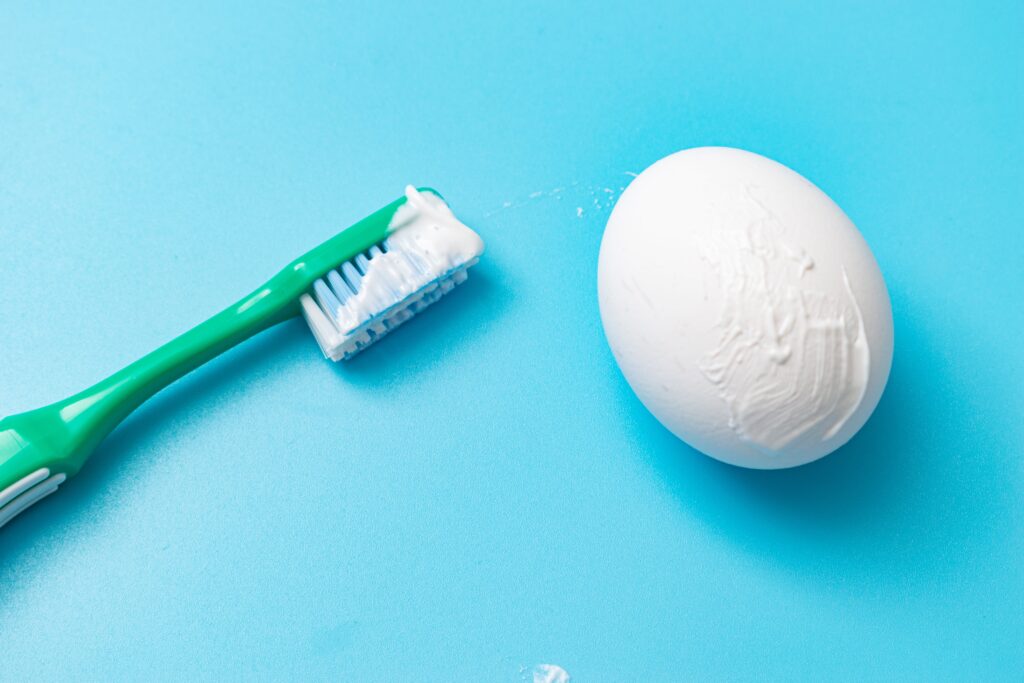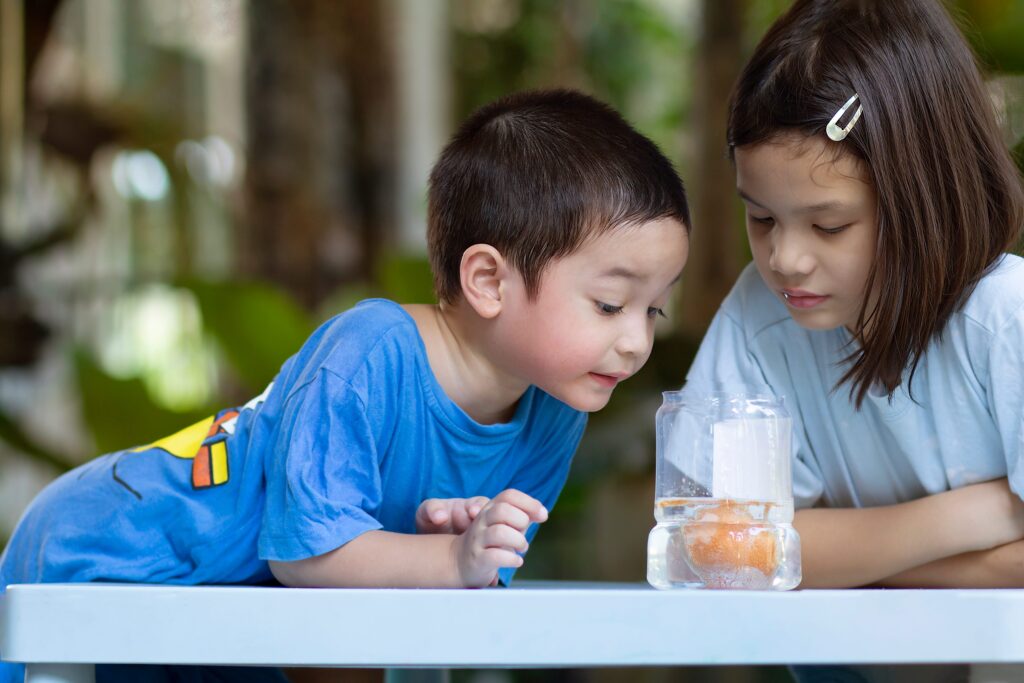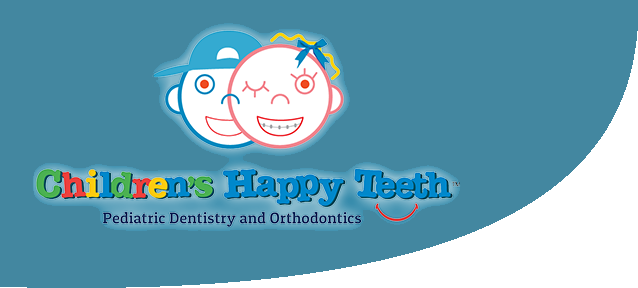Teaching your child about tooth decay is an important part of encouraging them to develop good oral health habits. However, rattling off information about oral health and tooth decay can be hard for a child to follow. Chances are, it may even bore them and leave them uninterested in taking care of their teeth. Instead, you can try this wonderful experiment to show your child how tooth decay can affect their teeth and why brushing with fluoride toothpaste is so important.
Coined the “EggSperiment Activity” by the Canadian Dental Association and Crest, this experiment uses an egg, toothpaste, and vinegar to show children the effects of acids and fluoride on their tooth enamel. Since eggshells are similar to enamel, they work well to represent teeth, while vinegar works to represent the acids produced by bacteria. Finally, toothpaste is applied to part of the “tooth” in order to show how fluoride protects the enamel. Give this experiment a try!
From the Canadian Dental Association website, here are the materials needed and steps for this experiment:
Materials
- Crest for Kids Cavity Protection Sparkle Gel toothpaste
- Glass measuring cup (500 ml / two cups)
- Three or four eggs without cracks – fresh or hard boiled*
- Table vinegar
- Paper towel
- Teaspoon
- Plastic wrap
- Marker or pen
- Clear nail polish
* You only need one egg for the experiment but you may wish to use three or four eggs at one time in case one egg gets dropped.
Preparation
- Let the egg warm to room temperature (three hours).
- Empty the entire tube of toothpaste into a measuring cup.
- Pat down toothpaste with a teaspoon to level and remove any air bubbles.
- Wash your hands.

- Wash the egg with warm tap water and dry it with the paper towel.
- With a marker or pen, mark one side of the egg with a small “X” to show the side that will not be covered (protected) by the toothpaste. Cover the mark with clear nail polish to protect it from the vinegar.
- Place the egg horizontally into the measuring cup, marked side up, so the toothpaste covers half the egg. Make sure the egg doesn’t touch the bottom of the cup.
- Cover the cup tightly with plastic wrap and put it in a safe place. Leave it at room temperature for four full days.
Acid Attack
- After the four days, carefully remove the egg with a teaspoon and rinse off all the toothpaste with warm tap water.
- Place the egg on a clean dry surface and let it dry overnight. Wash the measuring cup.
- The next day, pour enough vinegar into the measuring cup to cover the egg.
- Carefully place the egg in the vinegar with the teaspoon.
- Rest the teaspoon on the egg so that the egg remains under the vinegar.
- Gas bubbles will quickly begin to form around, and rise from, the unprotected side of the egg. The shell is being attacked by acid. (eventually bubbles will appear on the whole egg.)
- Leave the egg in vinegar until the unprotected side of the shell softens (side with the “X”). This will take from seven to 13 hours. If in seven hours you won’t be around to check, remove the egg from the vinegar before you leave, wash it with warm water and leave it on the counter overnight. Record how many hours the egg was in the vinegar. When you return, put the egg back in the vinegar.
Results

- After the egg has been in the vinegar for a total of seven hours, remove it and check if the unprotected side has softened by tapping very lightly with your finger. If the unprotected side is still hard, put it back in the vinegar.
- Check every hour or two until the shell has softened. If it has softened, continue to the next step.
- Remove the egg and gently wash it with warm tap water. (Be careful, it may be really soft.)
- Holding the egg in one hand, tap the unprotected side (side with the “X”) with your finger or a pen. The shell should be soft and weak. Tap the protected side. The shell should be hard and strong.





